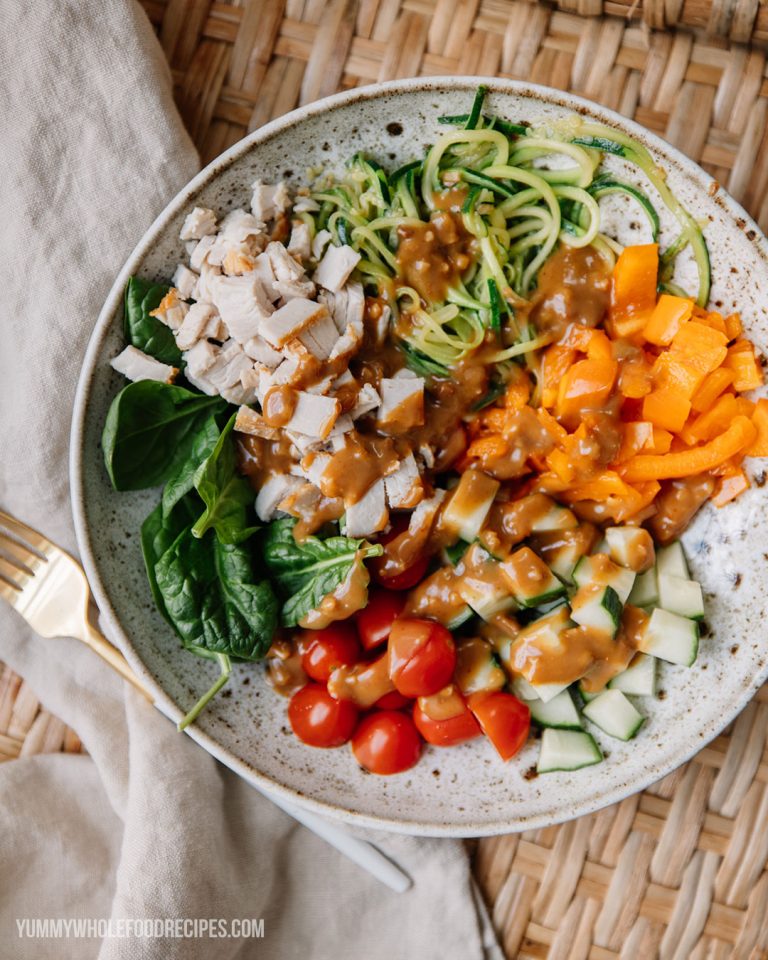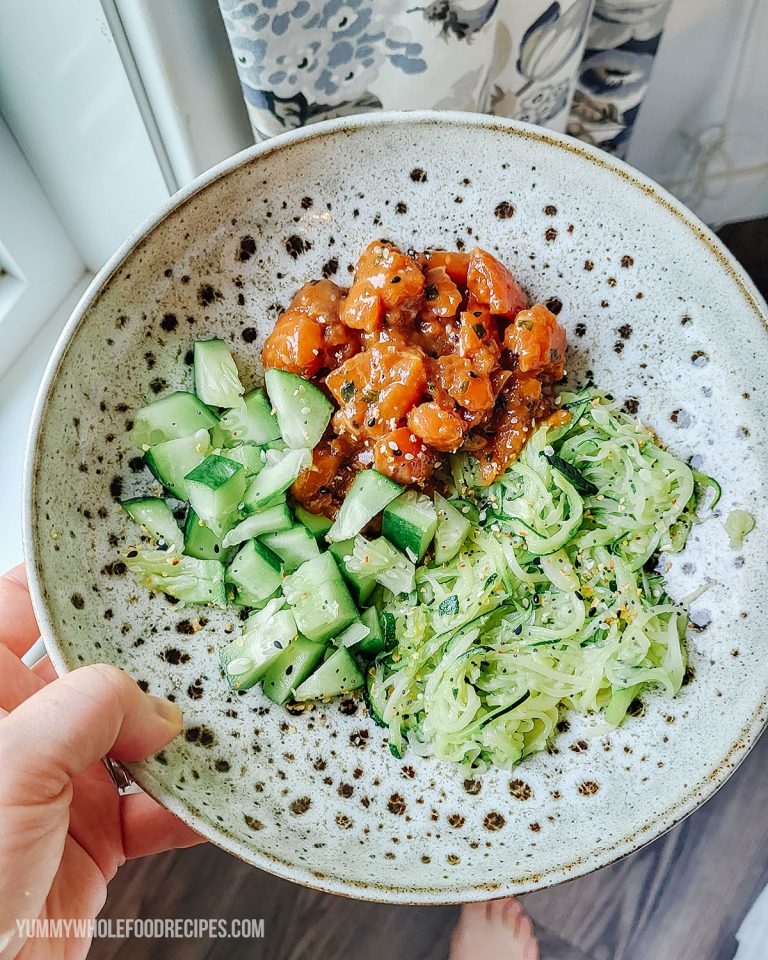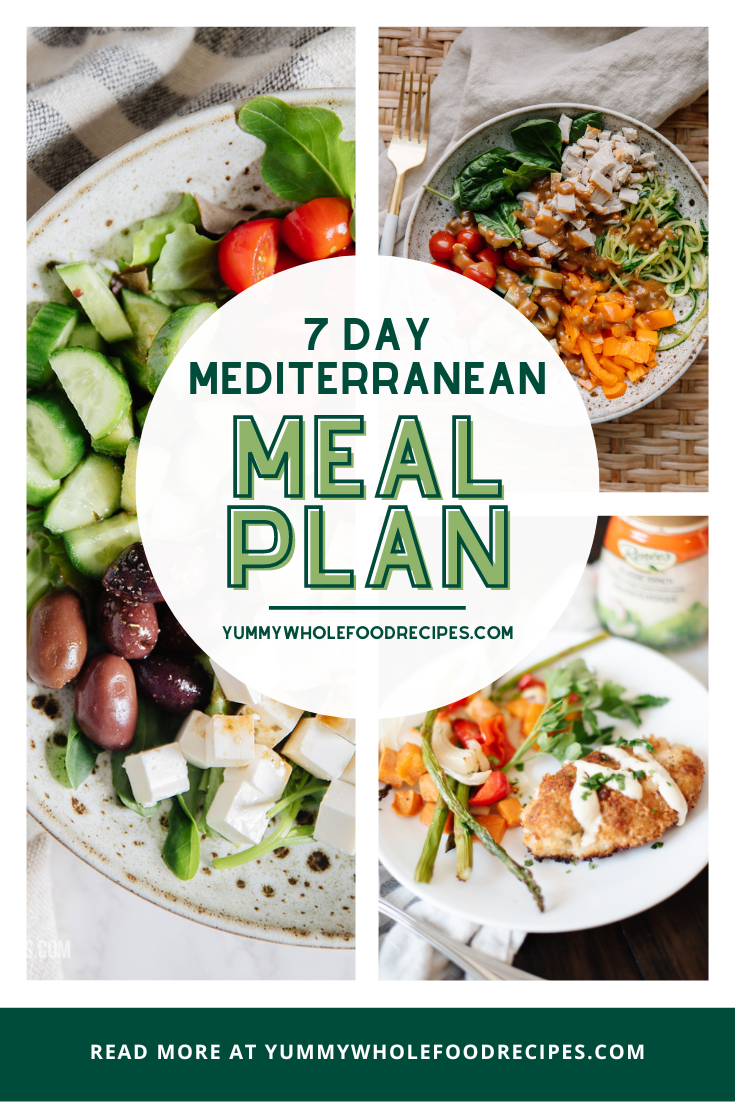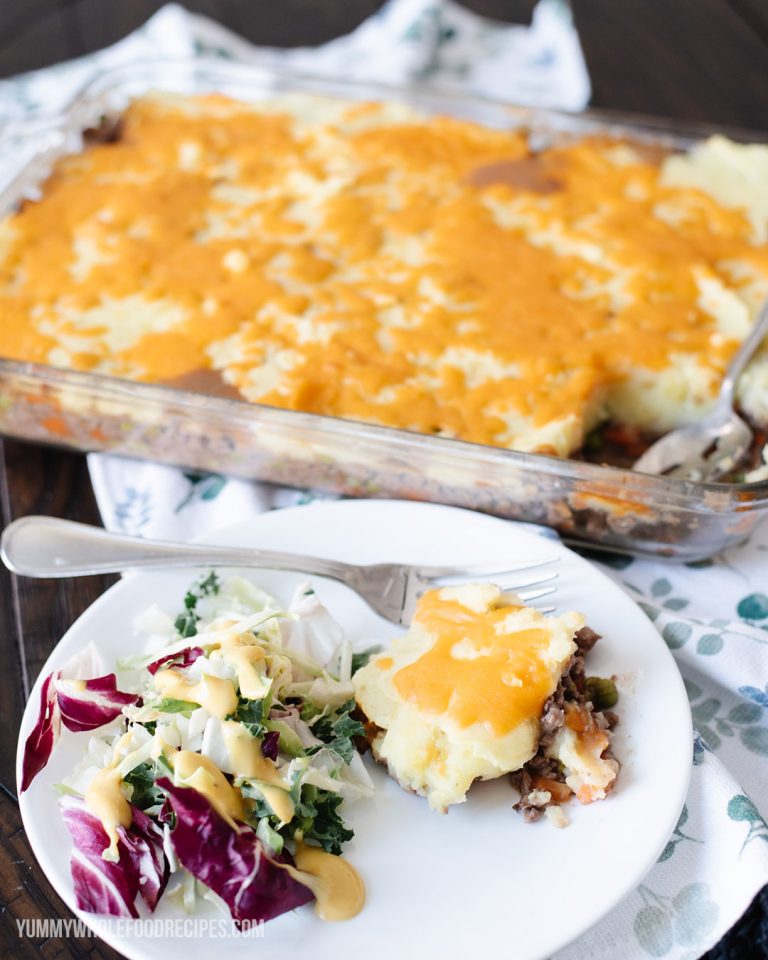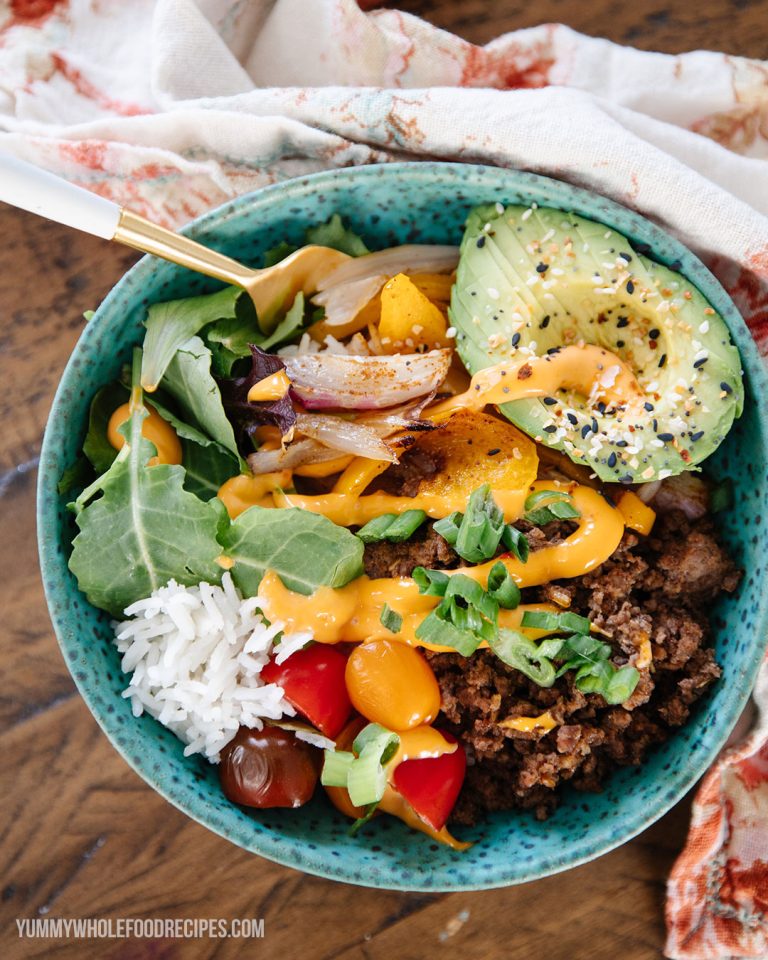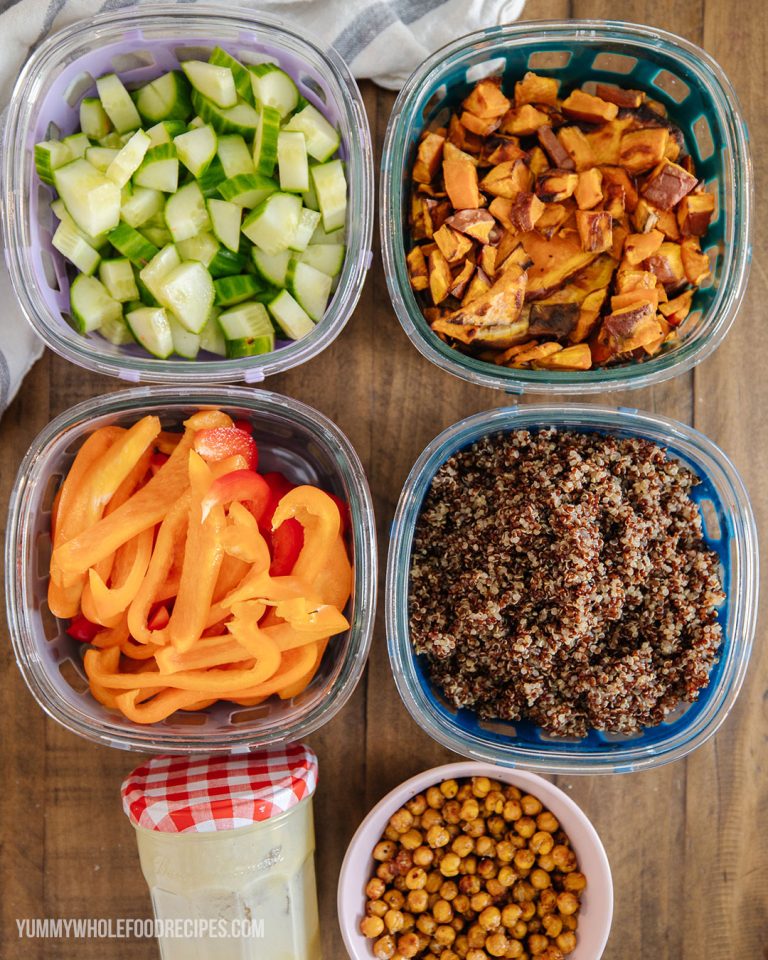How to Roast a Chicken (Juicy & Perfect Every Time!)
Wondering how to roast a chicken so it’s perfect every time? I’m sharing my simple recipe and all my chicken roasting tricks in today’s post!
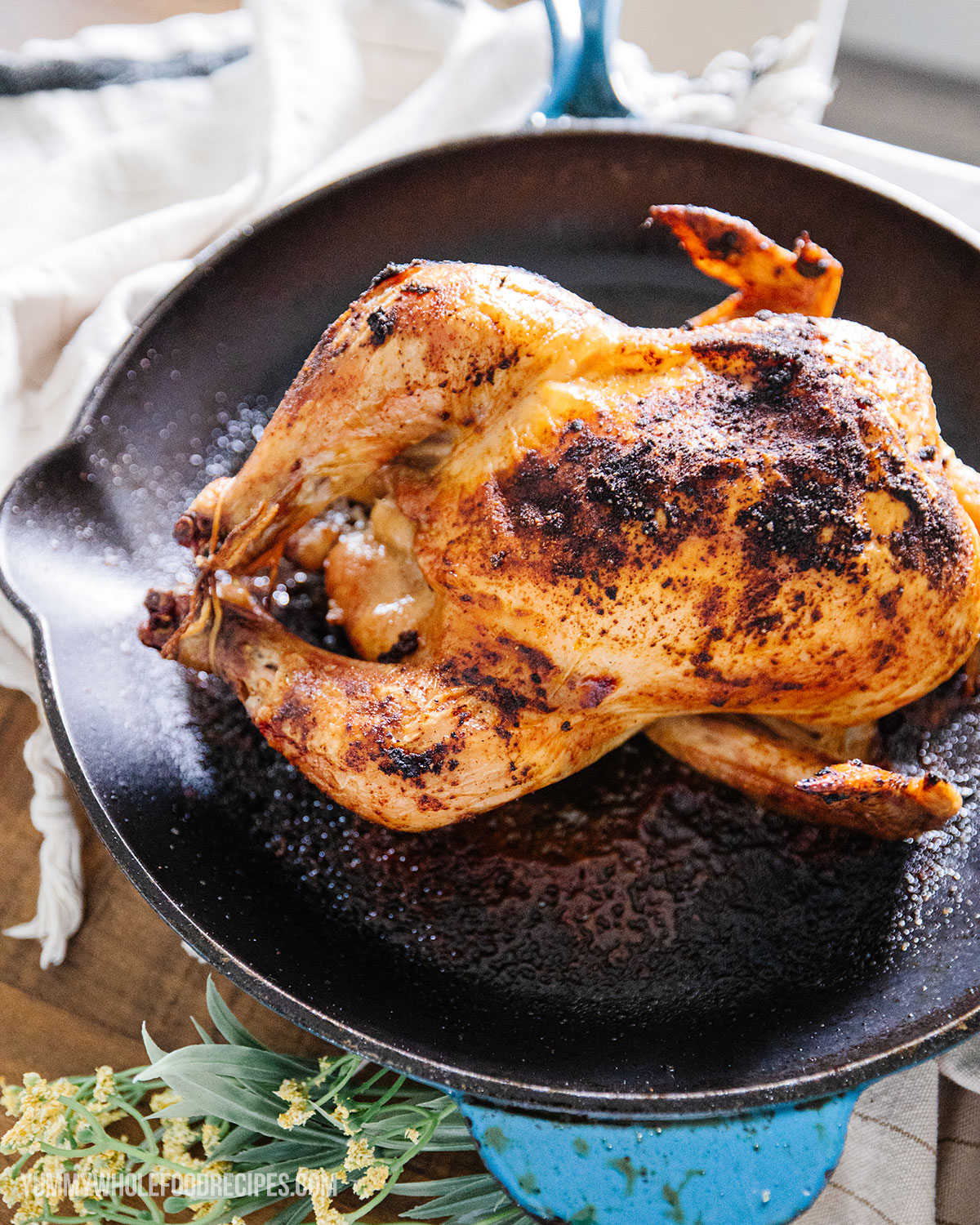
Roasting a whole chicken is THE epitome of preparing a whole food. Not only is simple roasted chicken mouth wateringly delicious, but I can roast a couple of chickens one evening, and then using the leftovers for the whole week in dishes like salads, stir fries and curries. Leftover chicken is especially delicious in this Healthy Rainbow Zoodle Bowl! My whole family loves roasted chicken for weeknight dinners, and it’s one of those dishes that you can prep, pop in the oven, and forget about it until it’s done. It’s easier to make than it looks, and it’s perfect for a busy week. Once you start making easy roast chicken from scratch, you won’t want to grab a grocery store rotisserie chicken any more… this is SO much yummier!
I prefer a chicken with a good amount of seasoning and crispy, golden skin. I’ve been making chicken like this for a few years now, and I’m happy to say it’s the perfect roast chicken!
Ingredients
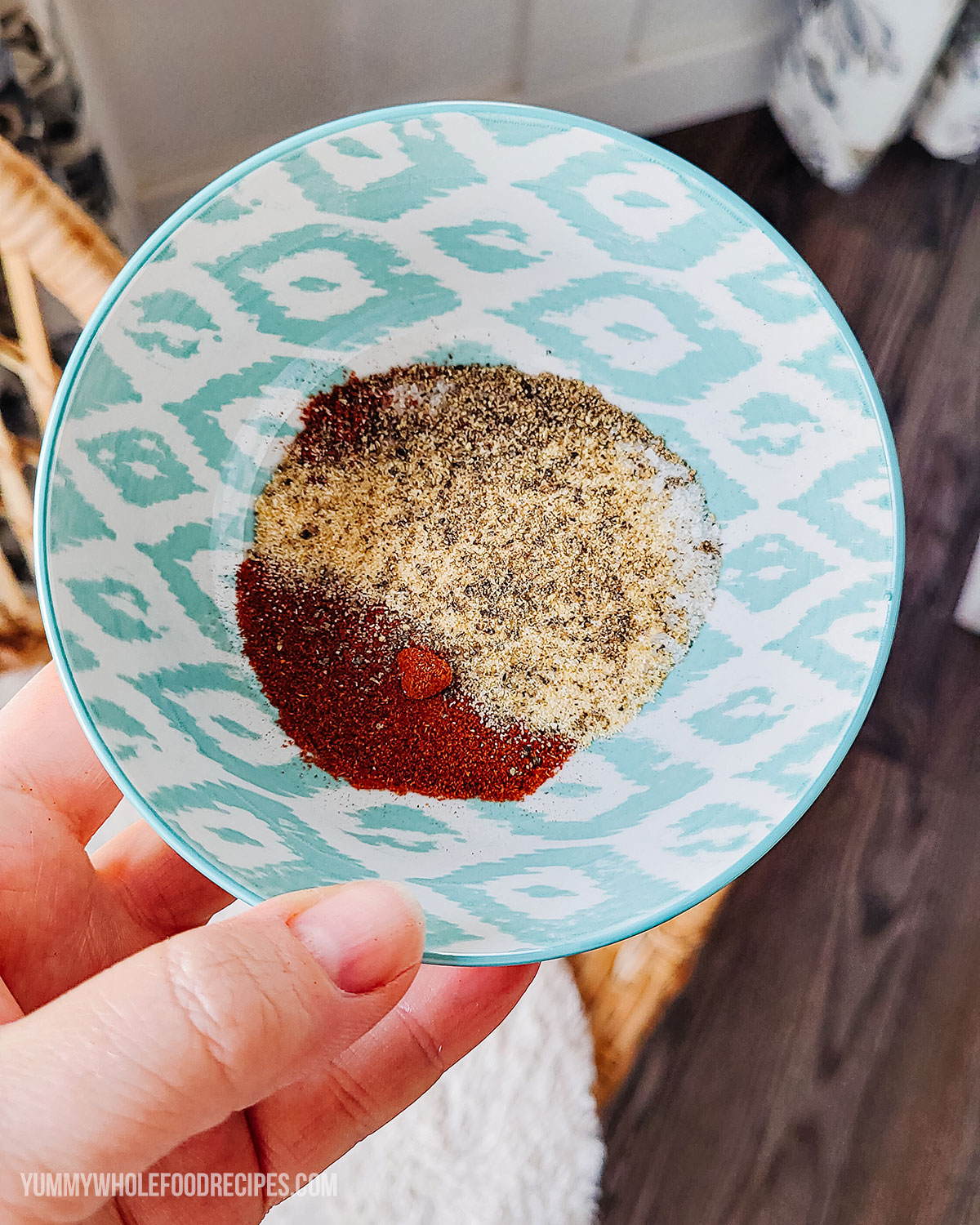
- whole chicken (I love to get a large, local chicken from the Farmers’ Market if I can; about a 4 lb chicken!)
- olive oil
- salt
- black pepper
- granulated garlic or garlic powder
- sweet paprika
See recipe card for quantities.
Instructions

Rinse your chicken inside and out, and pat it with paper towels to dry. Use a pastry brush to brush olive oil on the entire outside of the chicken, front and back. Mix the salt, pepper, granulated garlic and sweet paprika together in a small bowl.
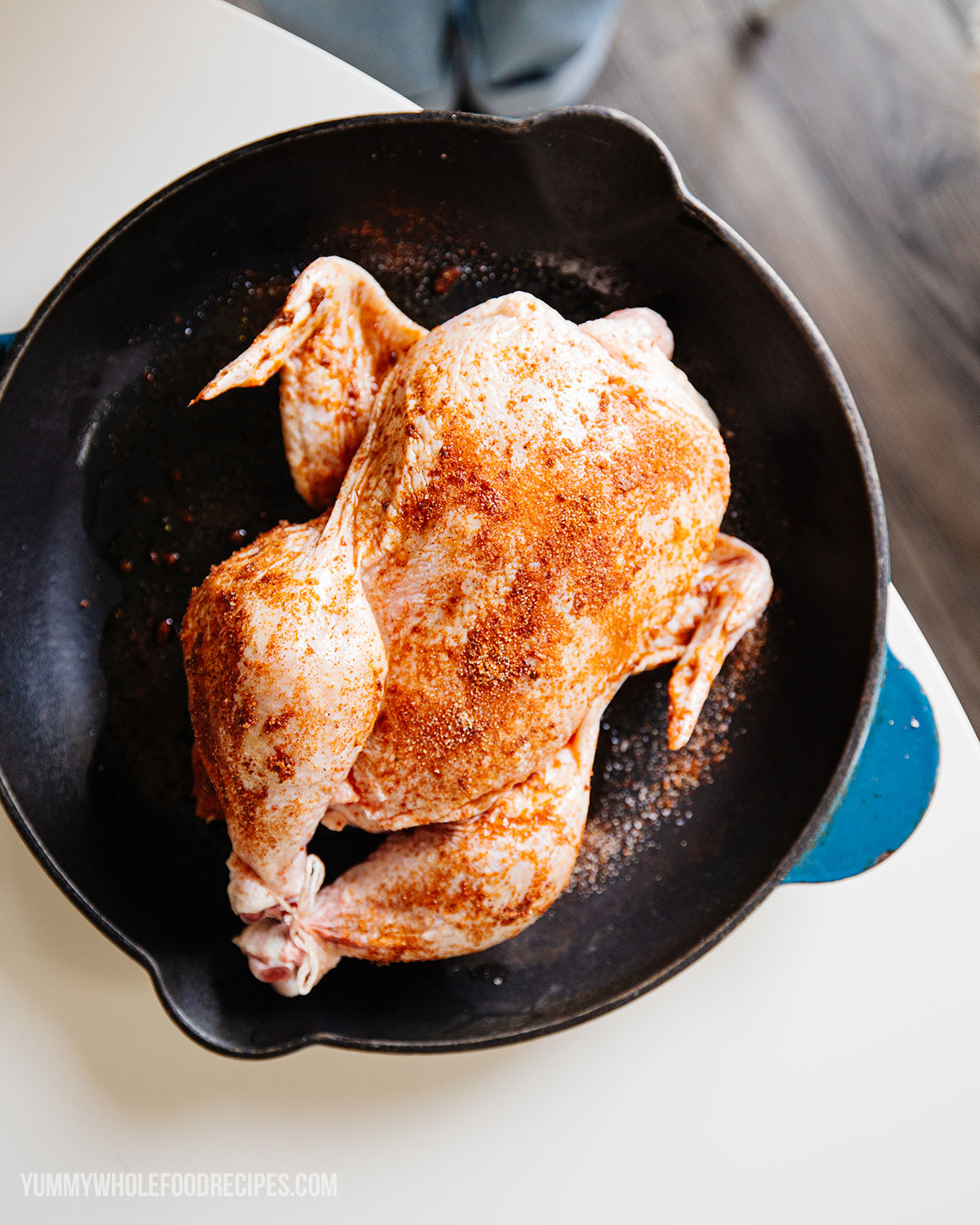
Rub or brush the spice mixture all over the chicken, inside and out. Place the chicken breast side up in a shallow roasting pan or cast iron pan. Tie the legs together with baker’s twine.
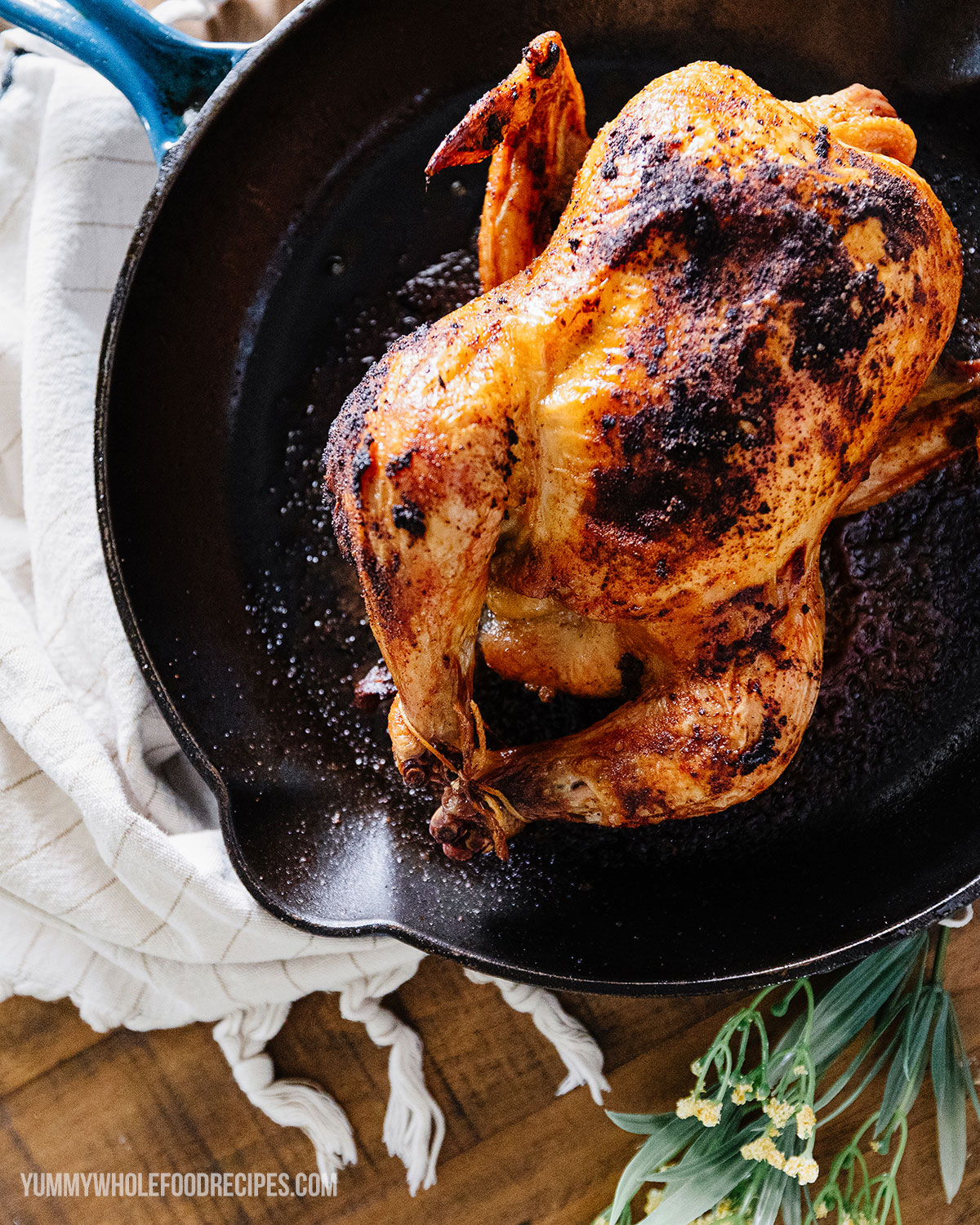
Roast the chicken in a 400 degree F oven for about 1 1/2 hours, or until the skin is golden brown and a meat thermometer placed into the thickest part of the thigh reads an internal temperature of 160 F.
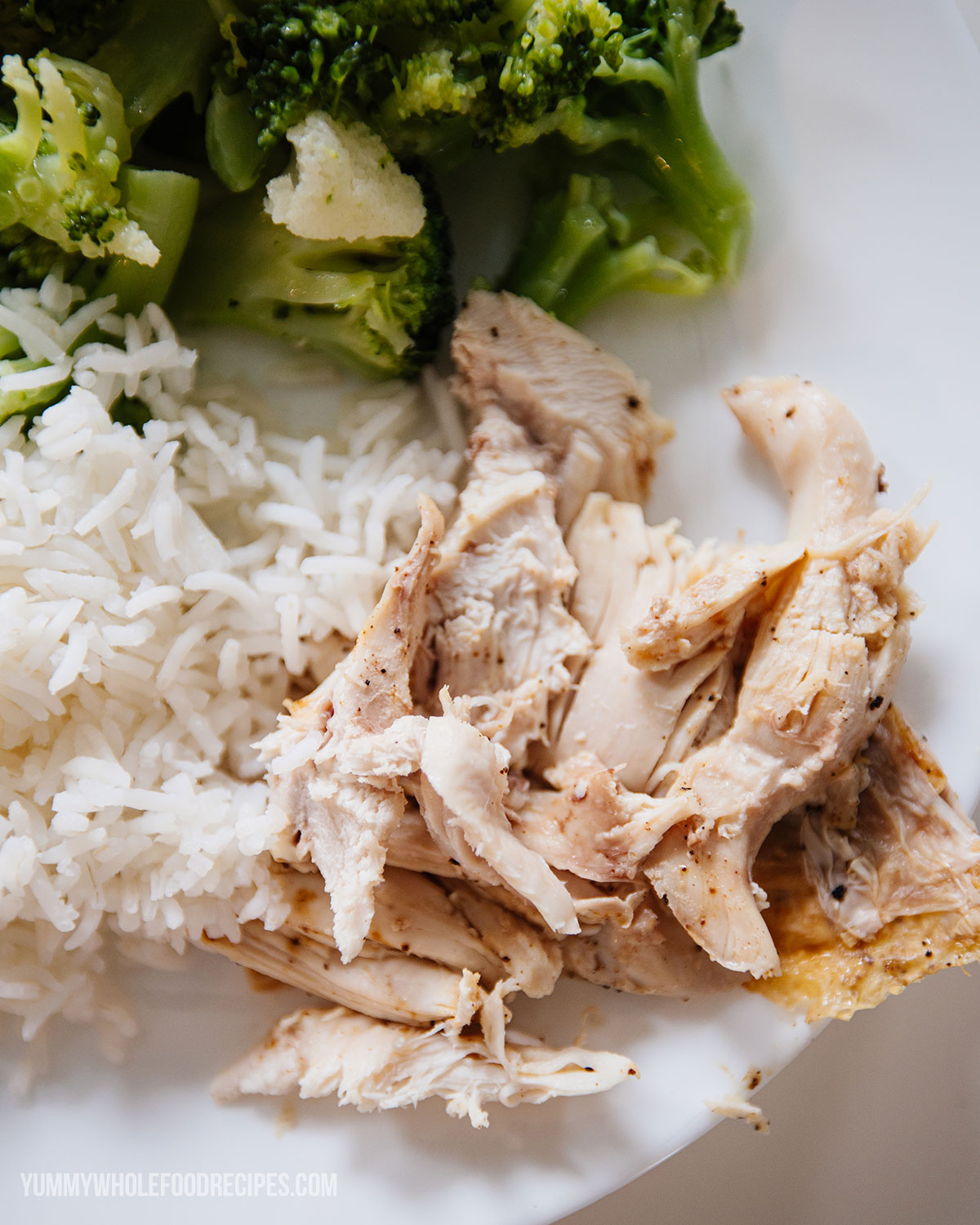
Let the chicken sit for about 10 minutes, carve with a sharp knife and enjoy.
Hints:
- Reserve the pan drippings to make gravy. To do so, place the roasted chicken on a cutting board. Pour the remaining liquid from the bottom of the roasting pan through a strainer into a small saucepan on the stove. Add chicken broth or water to the saucepan if needed to create about 2 cups of liquid all together. Heat the pan to medium-high, and then in a separate bowl whisk together 2 Tbsp all purpose flour and 2 Tbsp cold water. Pour the flour mixture into the pan drippings and whisk until the gravy thickens.
- To carve the chicken, always let the chicken rest after roasting for about 10 minutes before going ahead. This helps all the juices settle and makes the whole chicken taste so much better. First, cut both thighs & drumsticks from the chicken at the hip joint, then separate them. Next, cut the breast meat from either side of the chicken and slice it. Remove the wings from the chicken, plate and enjoy. You can pull any remaining meat from the carcass and it it, or leave it on and use it to create a soup.
Substitutions
- olive oil – instead of olive oil, you can brush the chicken with melted butter for a richer taste
- garlic – substitute granulated garlic for onion powder if you prefer the taste
Variations
- Fresh herbs & veggies – add a cup combined of chopped carrots, chopped onion, fresh rosemary sprigs & fresh thyme into the cavity of the chicken for a fresh, herby taste.
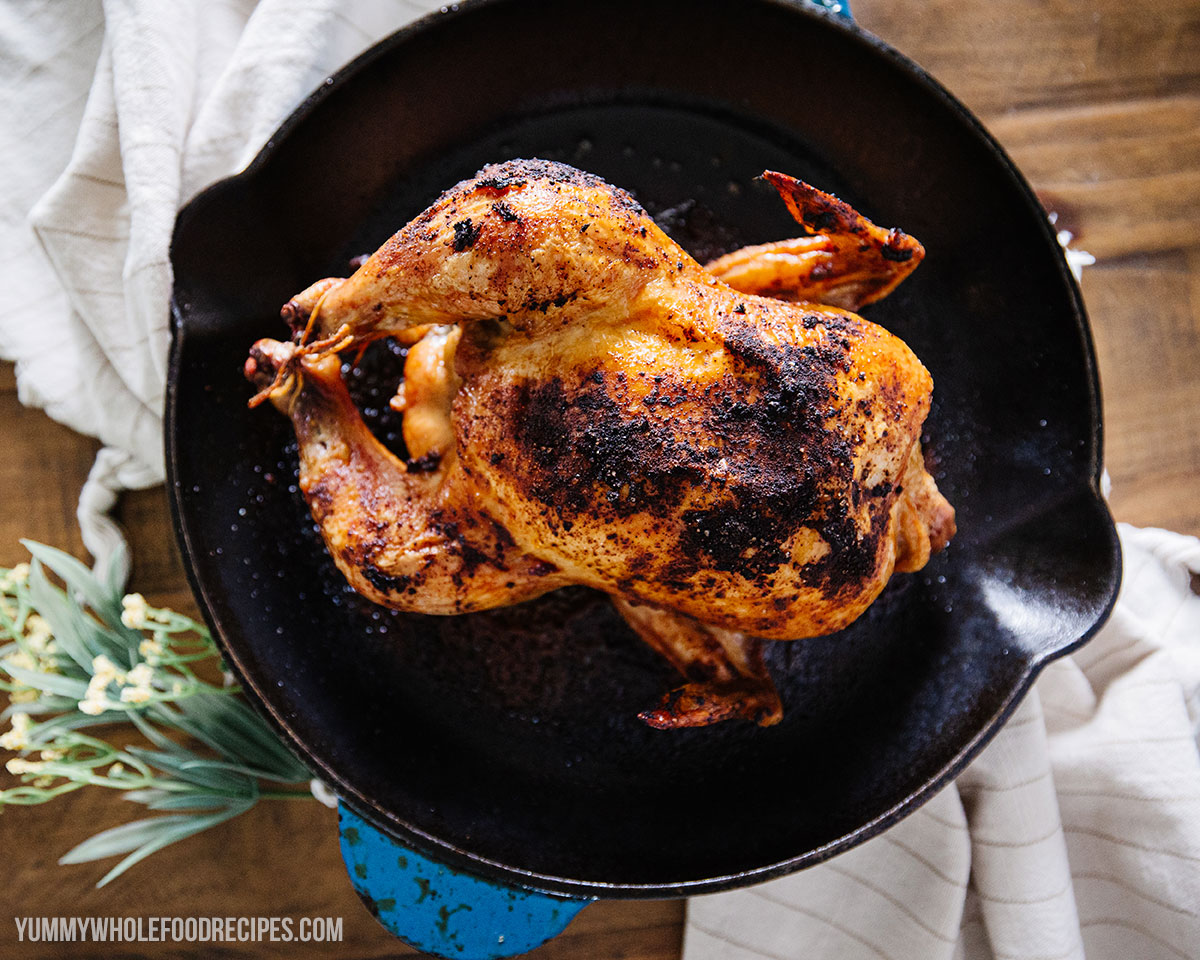
Equipment
A good roasting pan (or even a casserole dish, a cast iron pan, or a dutch oven without the lid) and an instant-read thermometer for meat is all that’s required to make a whole roasted chicken.
Storage
Store any leftover chicken in an airtight container in the fridge for up to 5 days. I like to chop up any remaining meat, and separate the white meat from the dark meat. I also like to save the chicken carcass to make a soup stock later in the week.
Top tip
If you tend to store a lot of frozen whole chickens in your freezer like I do, take them out a couple of days in advance and let them defrost in the fridge. Creating a meal plan will help you to remember to do this!
FAQ
To get a crispier, caramelized skin and juicy meat, roasting the chicken uncovered is better.
I like roasting at a high temperature so that the skin gets nice and crispy. I find that roasting low & slow is better for red meats to create a tender texture, but higher is better for poultry.
Roasting chicken at 400 degrees F will create the crispiest skin from my experience.
Cooking time will vary depending on the size of your chicken. It’s very important to have an instant read thermometer and measure the temperature of the chicken before eating it. The temperature of your roast chicken should be at least 160F, and I tend to err on the side of hotter just in case!
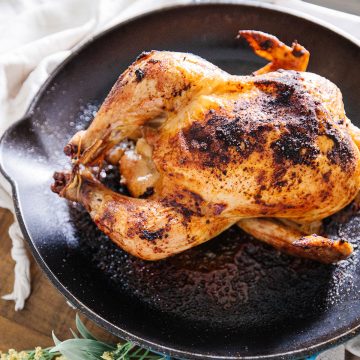
How to Roast a Chicken (Juicy & Perfect Every Time!)
Ingredients
- 1 whole chicken about 4 lbs
- 1 Tbsp olive oil extra virgin
- 2 tsp kosher salt
- 1 tsp sweet paprika
- 1 tsp granulated garlic
- 1/4 tsp black pepper
Instructions
- Rinse your chicken inside and out, and pat it with paper towels to dry. Use a pastry brush to brush olive oil on the entire outside of the chicken, front and back.
- Mix the salt, pepper, granulated garlic and sweet paprika together in a small bowl. Rub the mixture all over the chicken, inside and out. Place the chicken breast side up in a shallow roasting pan. Tie the legs together with baker's twine.
- Roast the chicken in a 400 degree F oven for about 1 ½ hours, or until the skin is golden brown and a meat thermometer placed into the thickest part of the thigh reads an internal temperature of 160 F.
- Let the chicken sit for about 10 minutes, carve with a sharp knife and enjoy.
Notes
These nutrition values are estimates only. Read my full nutrition disclaimer here.
Food safety
- Cook to a minimum temperature of 165 °F (74 °C)
- Do not use the same utensils on cooked food, that previously touched raw meat
- Wash hands after touching raw meat
- Don’t leave food sitting out at room temperature for extended periods
- Never leave cooking food unattended
- Use oils with high smoking point to avoid harmful compounds
- Always have good ventilation when using a gas stove

